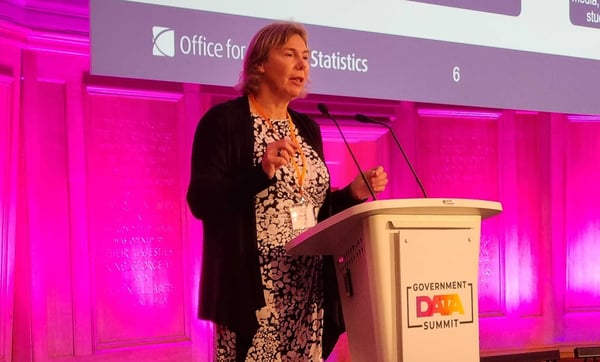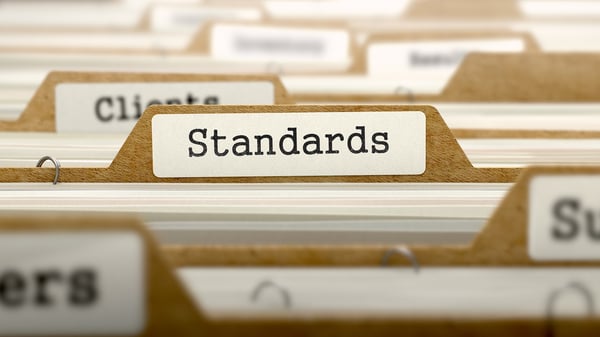Unlocking the value of data: panel discussion
%20Government%20Data%20Summit%202022.jpg?width=799&height=533&name=Unlocking%20the%20power%20of%20Data%20(panel%202)%20Government%20Data%20Summit%202022.jpg)
What is the role of leaders in the journey of transforming legacy data to real insights that improve citizen services?
That was the opening question of one of the panel discussions at last month's Government Data Summit, which featured perspectives from across the Civil Service, the US and Canada.
Alison Pritchard, Deputy National Statistician & Director General Data Capability, Office for National Statistics, Stephen Burt, Chief Data Officer, Treasury Board of Canada Secretariat, Government of Canada, Sue Bateman, Interim Chief Data Officer, Central Digital and Data Office and Richard Patterson, Chief Data Officer, Defence Security Cooperation Agency, shared their perspectives on how to maximise the leverage of data across government in pursuit of better delivery outcomes.
Delivery is the Strategy
"I’m quite solution-oriented and we need to design for tomorrow, build for now," said Alison Pritchard, Director General Data Capability, Office for National Statistics. "There will always be a desire for quick results, because the system has a need for quick wins. But at the same time we need to be building for the longer term. There may need to be two teams - one focused on the quick stuff, and one on longer term outcomes."
There needs to be a seamless journey from vision to design to plan, understanding what we're trying to achieve in government, she explained: "Our plan mustn’t be a communications tool, it needs to be an implementation tool."
"Strategy has an unnatural attraction in the public sector," agreed Stephen Burt, Canada's Government Chief Data Officer. "The risk is you write strategy and never look at it. We need to operationalise the data models - and combine long term planning with delivery. Build the implementation plan of a strategy into the strategy - and say what’s deliverable in the next three years."
The Central Digital and Data Office (CDDO) has worked closely with the rest of government on their data strategy, putting in place simple language about the need to ensure that data is fit for purpose, trusted and available, and that the Civil Service builds the architecture to be interoperable.
"The only people who read strategy are those who have to review it prior to publication!" said Sue Bateman, Interim Chief Data Officer with CDDO. "When we engage with CDOs and communities of practitioners across government, we're really explaining why we’re building to these key areas."
"Foundational aspects of data management aren’t a value proposition," she continues. "Instead we need to ask how the vision of data helps support the business, and supports better outcomes. So I always try to focus on the art of the possible."
Overcoming internal obstacles
"We stood up a federated date catalogue, and put in place metrics on the quality of our data," said Bateman. "We have to make data understandable, searchable and discoverable, creating a self-service analytics environment."
"Our biggest obstacles are legal, technical, cultural (ie. data literacy)," she continued. "In the UK context, funding decisions and planning is a challenge. We’re trying to encourage the Civil Service to think beyond boundaries of their departments, but we’re still trapped in budget boxes, constrained by departmental spending."
"Risk management is structurally siloed, so how do we apply different risk profiles to pooled data?" Pritchard added. "We need you guys on the vendor side to play nicely - we need you to help join things up."
"Everyone has their own perspective, technology, culture - understanding their data is the part we’re having trouble with," admitted Richard Patterson, Chief Data Officer of Defence Security Cooperation Agency in the US Federal Government.
"Lots of good talk around 'fail fast, fail forward' - from a risk culture perspective, if I get the answer wrong but I've followed the rules then I’m clean," noted Burt. "We need to acknowledge this as a barrier to innovation and resolve the risks for senior management."
"I look at the UK, and you have a really vibrant digital ecosystem," he continued. "Canada needs to scale up what we have, as well as bring in new people. Government can’t pay the same as the private sector, but then you don't have to. There is a mission element in the public sector, and there are a lot of benefits of working in government."
"It is really hard to find the right people with the right skillsets, and this is in part because of the inaccessibility of training," said Patterson. "So I use a lot of contractors!"
Longer term he said that government needs to make education resources free and work to drive the broad adoption of data tools to address the literacy issue, while also being clear about the big roles and unique opportunities of working in government.






